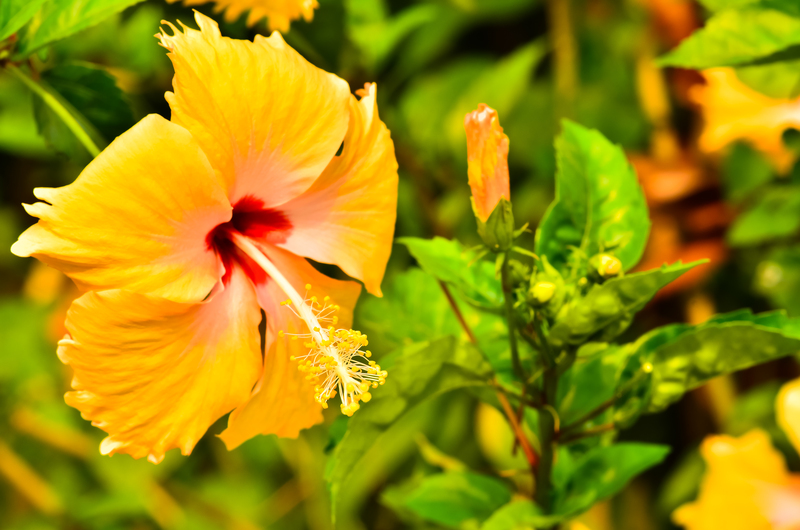Unleash your inner gardener with a thriving herb garden
Posted on 28/09/2025
Unleash Your Inner Gardener With a Thriving Herb Garden
Have you ever dreamt of harvesting fresh, fragrant herbs from your own backyard or kitchen windowsill? Now is the perfect time to unleash your inner gardener and cultivate a lush, bountiful herb garden! Whether you have acres of land or a sunny spot on your balcony, growing herbs is a rewarding, accessible way to connect with nature, improve your cooking, and nurture your well-being. In this comprehensive guide, we'll explore every aspect of starting and maintaining a thriving herb garden, from selecting the right herbs to troubleshooting common issues.
Why Start a Herb Garden?
Herb gardens offer multiple benefits for both novice and experienced gardeners. Not only do they provide a steady supply of fresh, aromatic ingredients, but they also:
- Enhance the flavor and nutritional value of your meals
- Attract beneficial pollinators and repel pests naturally
- Fill your space with beautiful greenery and soothing scents
- Promote relaxation and mindfulness through gardening
- Offer economical and eco-friendly alternatives to buying packaged herbs
Ready to discover your green thumb? Let's dive into the world of herb gardening!

Planning Your Thriving Herb Garden
Choosing the Ideal Location
The success of your herb garden starts with location. Most culinary herbs require:
- 6-8 hours of direct sunlight daily
- Well-draining soil
- Protection from harsh winds and extreme temperatures
Tip: If outdoor space is limited, don't worry--you can easily create a productive indoor herb garden using pots on a sunny windowsill or with the help of grow lights!
Selecting the Right Herbs for Your Garden
Before planting, consider which herbs you use most in your cooking or for medicinal purposes. Some easy-to-grow herbs for beginners include:
- Basil: A must-have for Italian cuisine and pesto lovers
- Mint: Refreshing in teas, desserts, and cocktails (best grown in containers)
- Rosemary: Hardy, aromatic, and perfect for roasting
- Thyme: Versatile and low-maintenance
- Parsley: Adds a crisp, green flavor to many dishes
- Oregano: A staple in Mediterranean dishes
- Chives: Great for salads, eggs, and garnish
More advanced gardeners might explore lavender, sage, dill, cilantro, or even unusual herbs such as lemon balm and lemongrass.
Herb Garden Styles: Find Your Perfect Fit
There's no single way to build a productive herb garden. Here are several popular options:
- Traditional In-Ground Beds: Great for larger spaces and mixed planting
- Raised Beds: Improve drainage and soil quality; easier to manage
- Container Gardens: Perfect for patios, balconies, and controlling invasive herbs
- Vertical Gardens: Save space and add visual interest on walls or fences
- Windowsill Gardens: Bring fresh flavors right into your kitchen
Pro Tip: Mix and match styles to suit your environment and gardening goals!
How to Start Your Own Thriving Herb Garden
Step 1: Gather Your Supplies
- Quality herb seeds or starter plants from a reputable supplier
- Fresh, well-draining potting mix (for containers) or amended garden soil
- Pots or containers with drainage holes
- Labels or markers for easy identification
- Watering can, hand trowel, scissors for harvesting
Step 2: Prepare Your Soil or Containers
Herbs generally prefer a neutral to slightly alkaline soil (pH 6.0 to 7.5) with good drainage. Mix in compost or organic matter to enrich the soil and improve fertility. For pots, choose a high-quality organic potting mix designed for herbs or vegetables.
Step 3: Planting Your Herbs
- Seeds: Start indoors 6-8 weeks before the last frost or sow directly outdoors after danger of frost has passed.
- Transplants: Gently plant seedlings at the same depth they were growing in their pots, spacing according to the variety.
- Water: Moisten soil after planting, but avoid waterlogging.
Note: Some herbs, like basil and cilantro, are best sown directly and do not transplant well.
Step 4: Caring for Your Herb Garden
With minimal effort, your herb garden will thrive and reward you:
- Water regularly, keeping the soil consistently moist but not soggy. Herbs in containers may need more frequent watering.
- Feed with an organic fertilizer every 4-6 weeks during the growing season.
- Mulch around plants to retain moisture and suppress weeds.
- Pinch and prune regularly to encourage bushy growth and abundant harvests.
- Watch for pests such as aphids, and remove them gently by hand or with a spray of water.
Maximize Your Harvest: Tips for a Healthy, Productive Herb Garden
Harvesting Herbs for Peak Flavor
- Harvest in the morning after the dew dries, when essential oils are most concentrated.
- Use sharp scissors or pruners to snip stems, cutting just above a leaf node.
- Never remove more than one-third of the plant at a time to maintain vigor.
- Continuous harvesting promotes new growth and prevents herbs like basil from flowering too soon.
Preserving Your Herbs
Fresh herbs are best used immediately, but you can preserve excess by:
- Drying (hang upside down in a dark, ventilated place)
- Freezing (chop and freeze in ice cube trays with water or oil)
- Infusing in vinegar, oil, or butter
Preserved herbs retain their flavor, aroma, and health benefits for months, allowing you to enjoy your labor year-round!
Troubleshooting Common Herb Gardening Challenges
Herbs are generally low-maintenance and resilient, but every gardener encounters occasional hiccups. Here are solutions to frequent problems:
Yellowing Leaves
- Overwatering: Let the soil dry out slightly before watering again.
- Nutrient deficiency: Add compost or an all-purpose organic fertilizer.
Leggy, Spindly Growth
- Insufficient light: Move plants to a sunnier spot or supplement with grow lights.
- Pinch back stems to encourage denser growth.
Pest or Disease Issues
- Inspect plants regularly for signs of pests like aphids, spider mites, or fungal spots.
- Wash affected leaves with a mild soap and water solution or remove damaged foliage.
- Encourage beneficial insects, such as ladybugs, to keep pests in check.
Taking Your Herb Garden to the Next Level
Once you've mastered the basics, consider expanding your horizons:
Medicinal and Exotic Herbs
- Grow chamomile for soothing teas
- Try echinacea or lemon balm for immune support
- Experiment with curry leaf, stevia, or Thai basil for unique culinary experiences
Companion Planting With Herbs
- Basil: Repels tomato hornworms and enhances tomato flavor
- Mint: Repels ants and aphids; grows well near cabbage and beans
- Thyme: Discourages whiteflies and makes a lovely border plant
Smart companion planting can boost yield, reduce pests, and support sustainable gardening practices.
Herb Garden Design Ideas
- Create a spiral herb garden for beauty and efficient use of space
- Arrange herbs by culinary nationality--such as an Italian, French, or Asian section
- Add ornamental touches: attractive containers, garden markers, trellises
Remember, your herb garden should reflect your tastes, lifestyle, and creative flair!
Year-Round Herbage: Indoor Herb Gardens
Don't let cold weather or limited outdoor access stop your green thumb. A windowsill herb garden provides year-round joy and flavor. Choose compact varieties, keep them near a bright window or invest in inexpensive grow lights, and follow the same watering and harvesting guidelines as outdoor gardens. Many urban gardeners rave about hydroponic herb kits for reliable indoor harvests--all you need is water, nutrients, and electricity!

Frequently Asked Questions About Thriving Herb Gardens
How can I start a herb garden if I have no yard?
You absolutely can! Pots, window boxes, or vertical planters work beautifully on balconies, patios, or sunny windowsills. Just ensure your herbs receive enough light and water.
What are the easiest herbs for beginners?
Basil, mint, chives, parsley, thyme, and oregano are forgiving, quick to grow, and practically foolproof with consistent care.
Can I grow herbs together in one pot?
Yes, as long as their sunlight and water needs are similar. For example, Mediterranean herbs (rosemary, thyme, oregano) thrive in the same conditions, but avoid mixing mint with other herbs as it spreads aggressively.
Do I need to fertilize my herb garden?
While herbs aren't heavy feeders, a gentle dose of organic fertilizer every few weeks can support lush, healthy growth, especially in containers.
Conclusion: It's Time to Grow!
Unleash your inner gardener and discover the simple, sustainable pleasures of cultivating your own thriving herb garden. With a bit of planning, some sunshine, and regular attention, you'll soon enjoy garden-fresh flavor, vibrant greenery, and a sense of pride that only comes from growing your own food.
If you're ready to improve your meals, decorate your home with lovely, living things, and experience the pure joy of watching seeds turn into something you can nurture and savor, now is the time to begin your herb gardening journey.
Start small, stay curious, and watch your green space--and confidence--grow!

